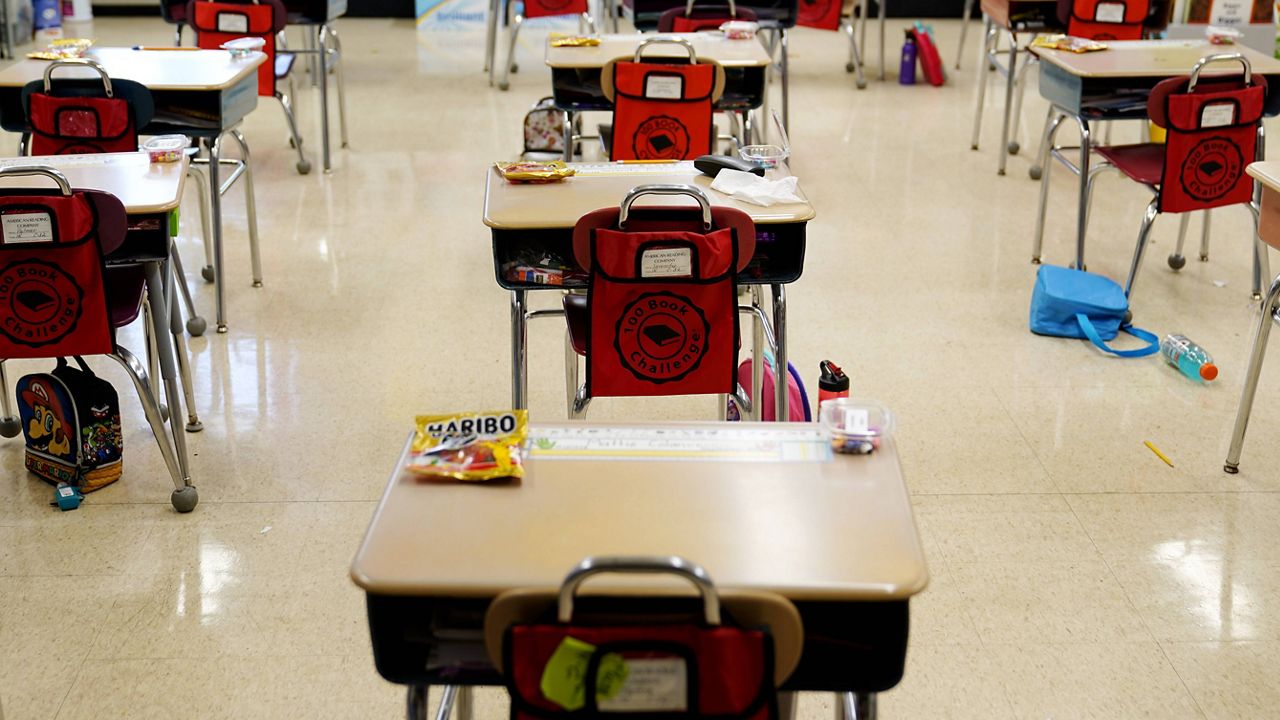An unvaccinated, sometimes unmasked teacher in California infected half the students in the class, which ultimately spread to at least 26 others, according to a study published Friday by the Centers for Disease Control and Prevention.
What You Need To Know
- An unvaccinated, sometimes unmasked teacher in California infected half the students in the class, which ultimately spread to at least 26 others, according to a study published Friday by the CDC
- Health officials say the study is further evidence that schools should follow a multipronged approach to keeping classrooms safe during the pandemic
- Twenty-two of the 24 students in the class, who were all too young to be eligible for vaccination, were then tested for COVID-19, with 12 testing positive
- Shortly after, six more students in another grade tested positive, and there were eight additional cases among parents and siblings of the students in the two affected grades
Health officials say the study is further evidence that schools should follow a multipronged approach to keeping classrooms safe during the pandemic, including vaccinations for those who are eligible, mask requirements, routine testing and ventilation, as well as staying home when experiencing symptoms.
“Schools should implement as many of these prevention layers as possible simultaneously,” CDC Director Dr. Rochelle Walensky said Friday. “And this serves to protect our children, even if there are inevitable breaches in any single protection layer.
“We know how to protect our kids in school. We have the tools.”
According to the study, the teacher at an elementary school in Marin County, just north of San Francisco, started experiencing symptoms May 19 but continued to work for two more days before being tested. During that time, the teacher occasionally read aloud to the class while not wearing a mask, despite school requirements to wear face coverings indoors.
Starting May 23, other staff members, students, parents and siblings connected to the school tested positive as well — 27 cases in all, including the teacher. Twenty-two of the cases were symptomatic.
Twenty-two of the 24 students in the class, who were all too young to be eligible for vaccination, were then tested for COVID-19, with 12 testing positive. Eight of those 12 students sat in the first two rows, closest to the teacher.
Shortly after, six more students in another grade — also too young to be vaccinated — tested positive. And there were eight additional cases among parents and siblings of the students in the two affected grades, three of whom were fully vaccinated.
Genome sequencing of all 18 available cases found those infected had the delta variant, which is more contagious than earlier strains of the coronavirus. Samples from at least 10 students in the two grades were indistinguishable, suggesting that all the cases were linked to the classroom with the infected teacher, one of only two staff members in the school not to be vaccinated.
The outbreak happened despite that parents said there was high compliance in the class with masking and distancing guidelines, that there were high-efficiency air filters in the classroom, and that doors and windows were left open.
The researchers said the true number of infections may be even higher because the virus might have spread further in the community outside the school. Some other cases with similar genome sequences have been detected.
The study comes as students are returning to the classrooms and many parents and elected officials are engaged in a heated debate over mask mandates.
The Education Department’s Office of Civil Rights announced Monday that it has launched an investigation in five states to determine whether statewide bans on mask mandates violate federal law by preventing students with disabilities from returning to in-person learning.
Walensky said CDC investigations are generally finding that outbreaks and large-scale quarantines are generally occurring in schools that are not following the CDC’s guidance asserting that everyone should wear masks and those who are eligible should get vaccinated.
“I want to strongly appeal to those districts who have not implemented prevention strategies and encourage them to do the right thing to protect the children under their care,” Walensky said. “We know these multilayered mitigation strategies work, and thanks to the American Rescue Plan, schools have the resources to implement these strategies.”



